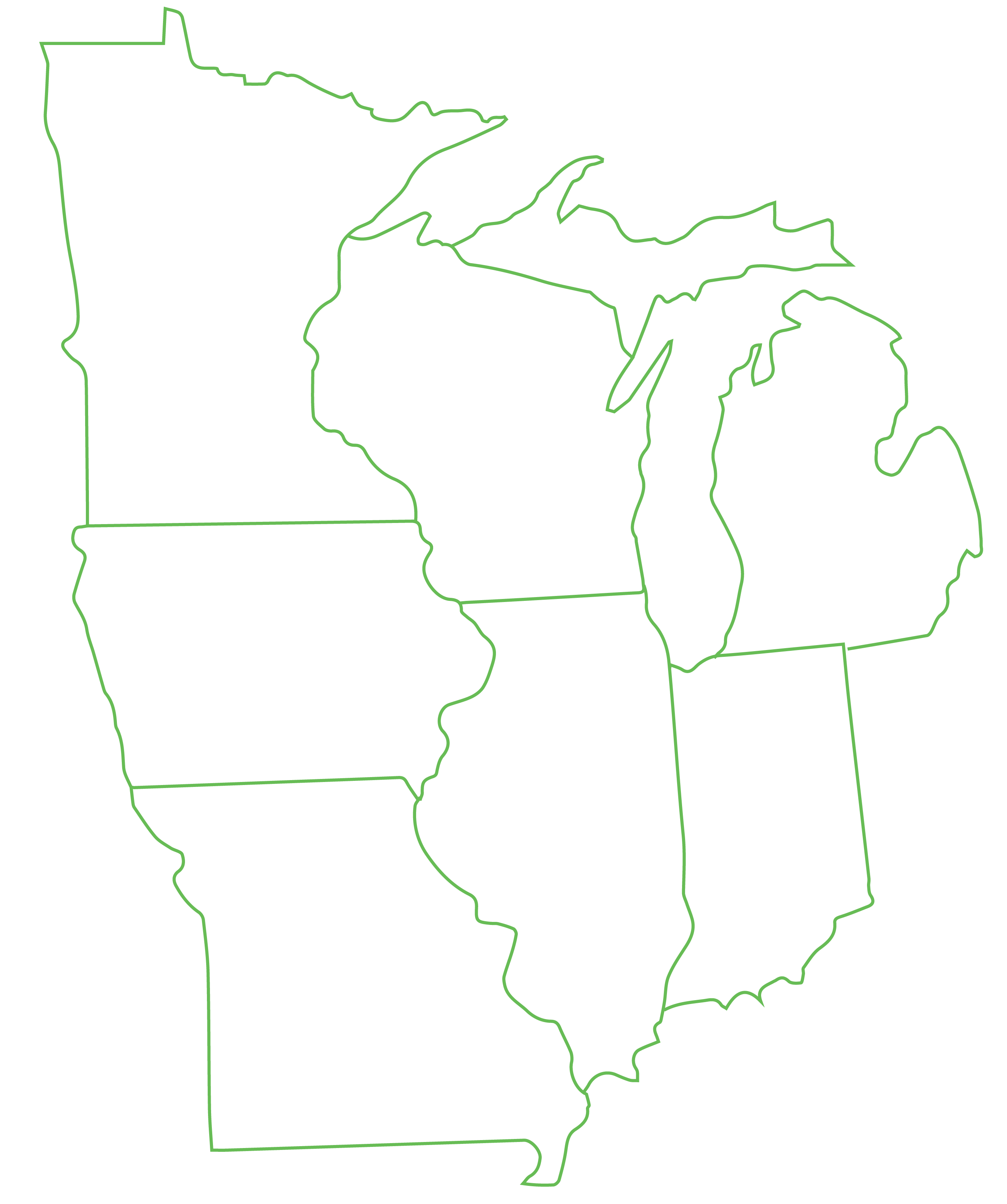Third South Vernacular and Oyster Knives: A Curatorial Monologue and Manifesto on Researching Regional Discourse
Alt Text: Map shows area from Mississippi River westward, with rivers, mountains, locations of Native American tribes, and "probable north boundary" marked in blue, and "probable south boundary” marked in light pink and ivory. Eastern border of the Mississippi River highlighted in orange. Written in pencil in lower left corner: "Carey's General Atlas 1808 LC p 442." Image courtesy of Library of Congress.
Third South is a vernacular term I often use that considers the underbelly of internal imperialism, of the modernism within a third world parallel to the global south. As a curator, I use this phrase to voice language that reflects globally southern semantics, while contemporary visual dialogues are the oyster knives. Hence “Third South and Oyster Knives.” The colloquial use of oyster knife comes from Zora Neale Hurston’s famous quote “I do not weep at the world, I’m too busy sharpening my oyster knife” (Dust Tracks on a Road). The theme of oyster kniving in my practice is meant to serve as surreal and as radical expressions of identity that represent etiquette and rebellion.
From the stateless no nation of Puerto Rico to Bulbancha, from the river to the sea, my curatorial practice is a ritual that explores the visual language of regional discourse that circulates internationally and domestically within the legacies of Afro-Indigenous Americana identity. That is the true identity of “the South,” regardless of region. In real time, my practice looks internally (between Americana regions) and connectively (to the global south), simultaneously achieving an informed break in our Third South.
When I moved to the Midwest for my curatorial practice, it became abundantly clear that Black people across regions are the originators of contemporary culture and collective consciousness. While we are looking at the imperial, we also have to look everywhere that afro-americana epistemology exists, and for this reason, I consider the developing Midwest Third South as well. Our dialogue is our Oyster Knife.
So far, as the current Curatorial Fellow at the Charlotte Street Foundation in Kansas City, MO, my curatorial research explores what Black pageantry looks like in the American Midwest Third South versus the American South, and at the intersection of queer and Black pageantry. Very quickly, in my curatorial research, I found myself navigating historical segregation in Kansas City, especially as it relates to gender. Although it could be assumed that I only focus on identity-based art, passively assuming this homogenizes the context that curatorial research can provide. I’ve always said that when it comes to my curatorial research, I will never give you a group show of ten BIPOC artists and passively call it Contemporary. It’s important to point out how this work continuously challenges me to be in constant dialogue with Truth, even when that truth isn’t my reality. These are not projections of any minstrel version of reality. It’s research. What I do is at the intersection between Contemporary Art and social pedagogy.
Furthermore, when I think of transmigratory resistance I often say I think of the South as the genesis of the imperial global south. Others may argue that globally, the South wasn’t considered in national discourse until the indoctrination of the Midwest via manifest destiny. Perceiving the region as it relates to this one version of the truth is inherently passive and patriarchal. Folks talk about third worlds, but as we learn to manipulate the semantics of visual language for transmigratory resistance, we will continuously keep speaking the vernacular of oyster knives, speaking on how our landscapes are connected rather than conquered.
My upcoming exhibition this September is an allegorical reference to the 1996 Olympic in Atlanta, where I’m from. As we anticipate six FIFA games here in KC in 2026, folks also rumor that the Chiefs will make it to New Orleans for next year's Super Bowl. I see development-oriented interconnectedness between these cities that I’ve lived in during my childhood and adult life. In response, my exhibition focuses on visualizing multiple sites created by the works in conjunction with performance. This is also meant to represent how hyper-industrial development in a sports capital can break the way we experience infrastructure.
I can admit that I do weep at the world, and my tears have given me soma, and my tears have given me timbre. These are Allegories of Inertia, and consequently that this is the title of my next show.
This is also a prelude to my final exhibit in curatorial fellowship at the Charlotte Street Foundation. It will consider Brown futurisms in architecturally modernizing this passively integrated redlining capital of the Midwest. The semantics of minimal design need to also be visualized with generations of KC natives and natives of the Americas, even as the upwardly mobile forget that the story of the Crossroads Arts District coincided with the displacement of Latino Westside neighborhood, due to the fact that it also coincided with construction of the Southwest Trafficway. As redlining is less visible via gentrification, it will be important for contemporary discourse to discuss “things,” meaning passively discussed metropolitan anecdotes. “Things” like how Strawberry Hill in KCK had an era of Black gentry and then Brown. I will leave the fellowship informed by the discourse of Geometrica: Pop y Rucas, which, you may have guessed, is the name of my last show.
Today, I’m in the Midwest post-Louisiana Purchase, as a postmodern Boricua and ghost of a half-Mexican girl whose father was deported when she was young. I say all this with great confidence that I’m forever reporting live from Atlantastan, regardless of my physical location and what gets done to my city. No matter how nomadic my art practice makes me, I will know who I am, but will be forever indebted to the Kansas Citians who speak the same vernacular languages I do.


